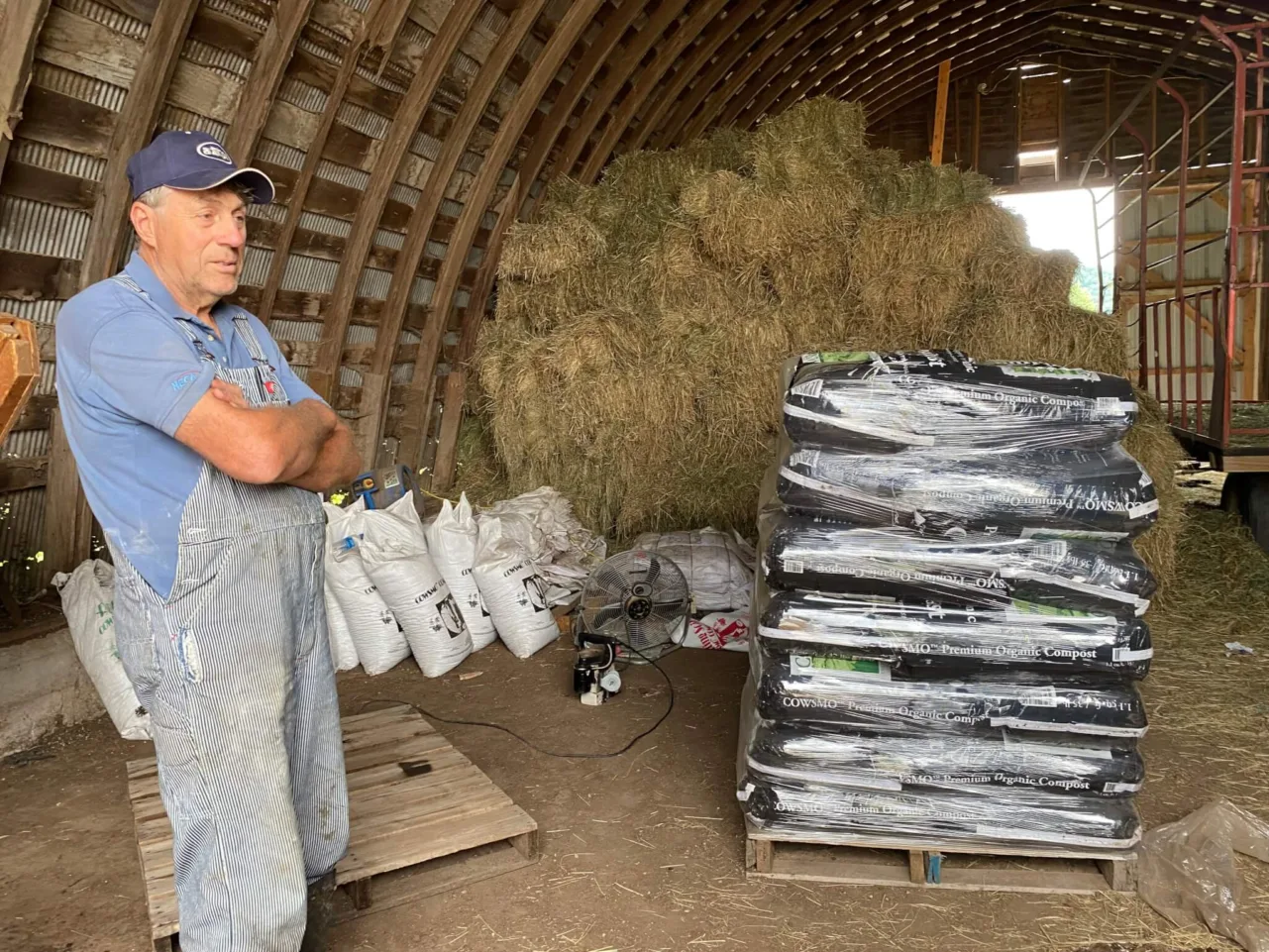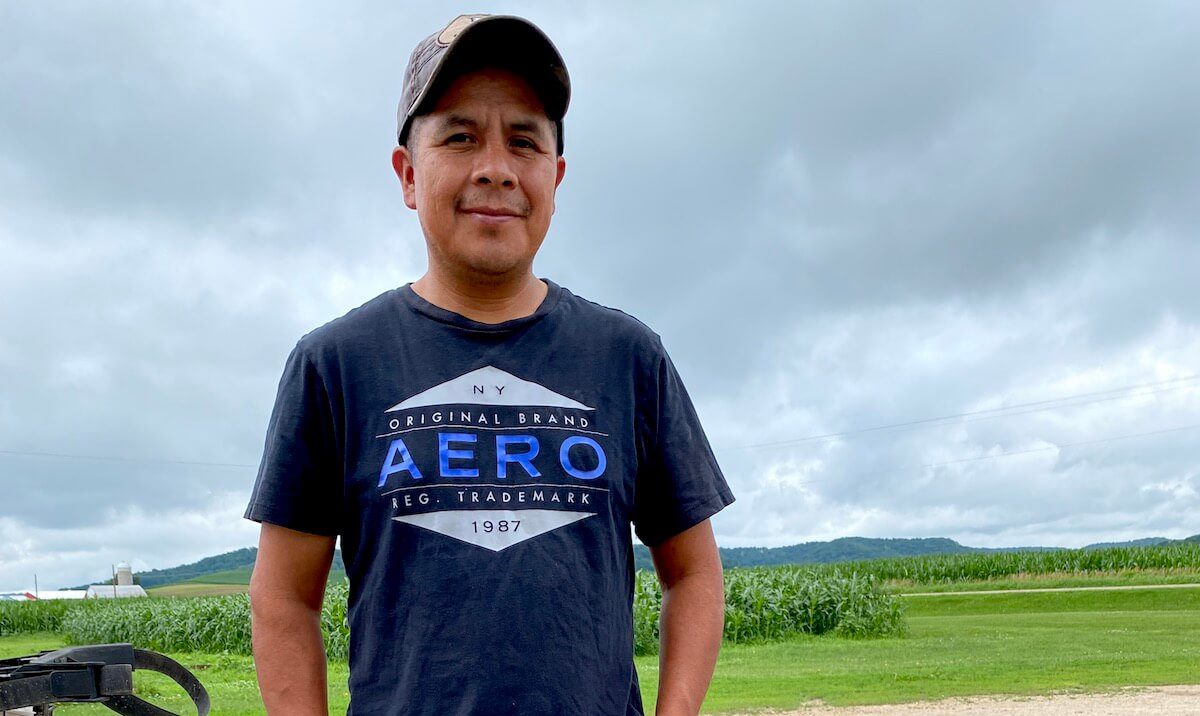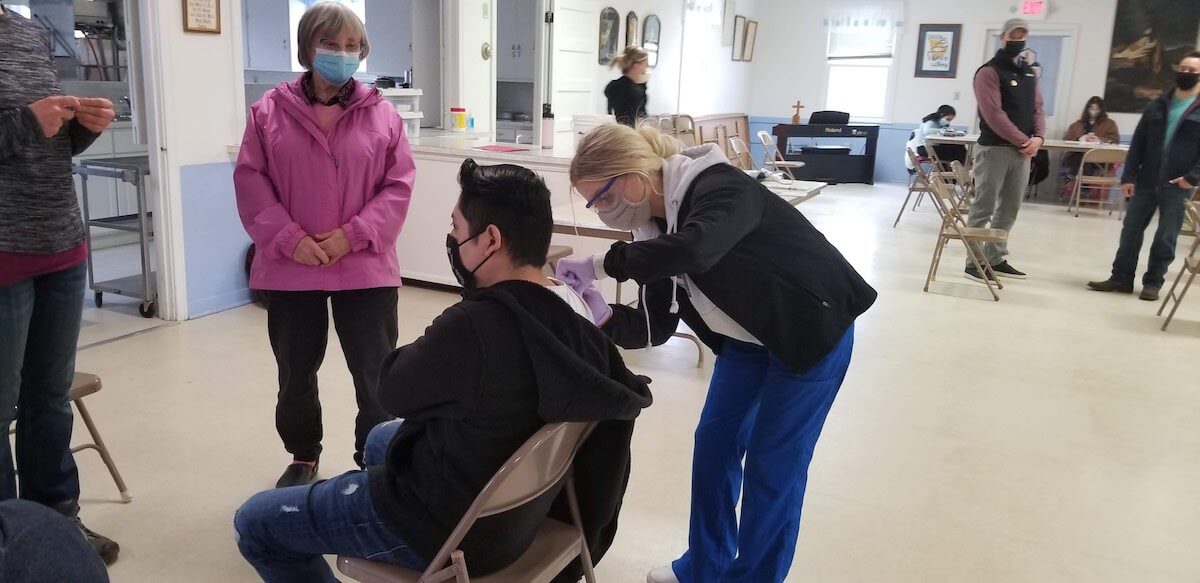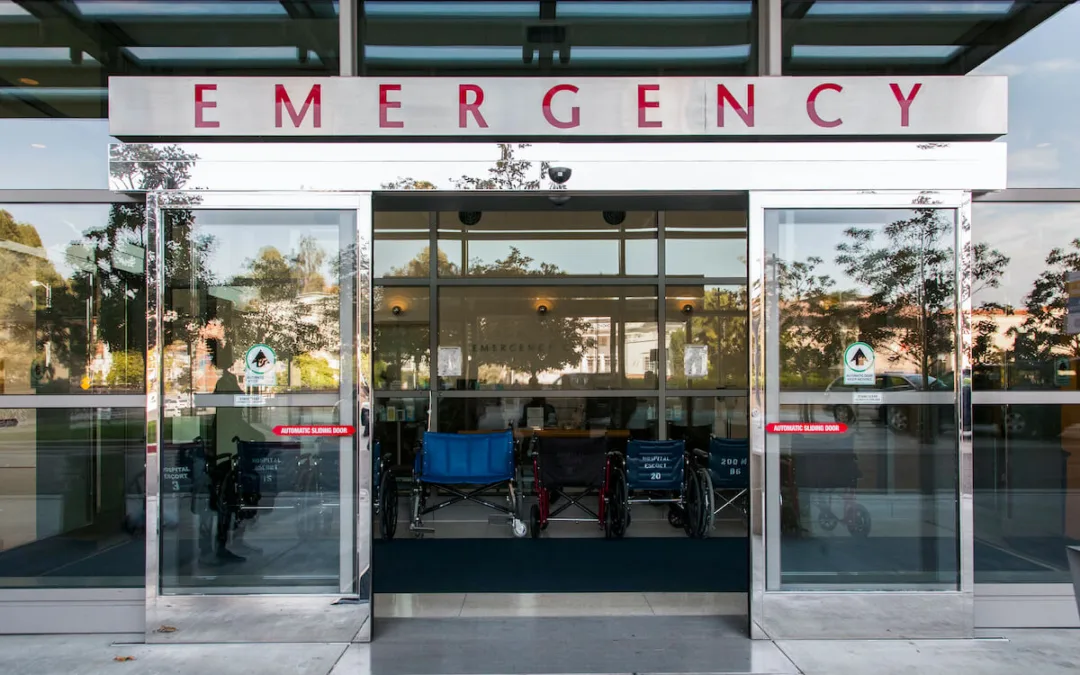
#image_title
#image_title
How farm owners and health officials are working to overcome vaccine hesitancy among farm employees.
After contracting COVID-19 in November, John Rosenow experienced the telltale signs of the contagious, potentially deadly virus, one by one.
Loss of taste and smell. Fatigue. Fever. Cough. Confusion. Then difficulty breathing.
“I got it bad,” Rosenow, the 71-year-old owner of the 800-acre Rosenholm Dairy farm in the rolling hills of Buffalo County, recalled Thursday from the office in his barn. “For 10 days, I was feeling really, really rotten. I was really struggling.”
As Rosenow’s symptoms worsened, he worried not only for his health but for that of his 20 farm employees, half of whom are Latino. One of them tested positive for the virus, and two others almost certainly had it, based on their symptoms.
Those workers are vital to the successful operation of his 600-cow dairy herd and another 550 cows he raises, Rosenow said. If the virus spread to too many of his employees, keeping his farm up and running would be a daunting challenge, he said.
Thankfully, Rosenow said, COVID-19 didn’t spread to his other workers. When vaccines that protect against contracting the virus were made available earlier this year, he jumped at the chance to give his employees access to them. He rearranged workers’ shifts so they could travel about 15 miles away to Alma to be vaccinated against the virus. As of now, 17 of the 20 workers at Rosenow’s farm are vaccinated.
Roberto Tecpile is among them. The 42-year-old from Astacinga, in the Mexican state of Veracruz, who has worked at Rosenow’s farm for the past seven years, was infected with COVID-19 and said he was grateful to receive the vaccination.
“My bones hurt, and I was so tired,” Tecpile said, noting he was not tested for the virus but exhibited some of its symptoms and was sick for about a week. “When they said I could get the vaccine, I was really happy about it.”

The state Department of Health Services (DHS) and health officers across Wisconsin said they are working to try to vaccinate as many farm workers like Tecpile as possible. Doing so is a part of the ongoing effort to boost vaccinations across Wisconsin as they have slowed significantly in recent months.
“We continue to create resources and collaborate with local health agencies and partners to provide on-site vaccination in the form of mobile vaccination teams and educational support,” DHS spokeswoman Elizabeth Goodsitt said.
The UW-Madison Extension Office also is working to help vaccinate agricultural employees. The agency is partnering with county health departments and others to focus on increasing vaccinations in rural communities in general and among farm workers specifically, said Emily Latham, UW-Extension health communications outreach specialist.
While successes such as vaccinating workers at Rosenow’s farm are occurring, health officials said, reaching those employees is often challenging for a number of reasons, but is important. Latinos and other people of color are less likely to have been vaccinated against the virus than their white counterparts, DHS figures show. According to labor force statistics, Latinos make up more than 40% of farm workers in Wisconsin, although some industry experts say that number tops 50%.
Data also shows COVID-19 vaccination rates in rural areas generally lag urban ones. The 10 Wisconsin counties with the lowest vaccination percentages all have rural populations. Statewide, 50.7% of Wisconsin residents have received at least one dose of the vaccine, and 47.9% have received both doses.
Other hurdles to vaccinating farm workers include language barriers, their busy work schedules, and lack of transportation, health officials said. With Latino workers, whether they are US citizens also leads some to be hesitant about receiving the vaccine, officials said, because they think they need to provide a Social Security number or ID to be vaccinated. In April, DHS issued a press release stressing that vaccine recipients do not need proof of residence, an ID, or health insurance to receive a shot.
Mercedes Falk is director of Puentes/Bridges, a nonprofit organization that links immigrant workers and the rural communities where they live in west-central Wisconsin and southeast Minnesota. The organization has been working for two decades and has built trust among Latinos, she said, a factor in convincing some to be vaccinated.
“But the folks we have not worked with, I think immigration status is an issue when it comes to their willingness to get the vaccine,” Falk said.
Mixed Vaccination Results
In Dunn County, health department staff are working to connect with the county’s Latino community to help them access COVID-19 vaccines. While members of that population have attended vaccination clinics put on by the department, connecting with Latino farm workers has proven more challenging, county Health Officer KT Gallagher said.
Such issues as language barriers, transportation, and worries about immigration status have proven to be barriers to vaccination, she said. Sometimes, simply getting responses from farm owners to allow vaccinations to occur at those sites can be difficult, Gallagher said, noting so far her department has been unable to schedule a vaccination clinic at a farm.
“For the most part we have not been successful” getting farm workers vaccinated, Gallagher said. “I think we could do better, and we will continue to work toward that.”
The Chippewa County Health Department recently held a COVID-19 vaccination clinic at which 19 people were administered the vaccine. While that event marked a success in reaching farm workers, such instances don’t happen frequently, health department Director Angie Weideman said.
“One of the challenges is not all farms want us to come,” she said. “There seems to be some hesitancy there.”

The health department recently hired two employees—one who speaks Spanish and one who speaks Hmong–to better connect with those populations, including farm workers. Weideman said she hopes their efforts will lead to additional farm employees being vaccinated.
Health department directors in other counties said they’re doing all they can to reach farm workers and other rural residents. In Eau Claire County, the health department is hosting vaccine clinics in rural locations and at such sites as fairs and the upcoming Wisconsin Farm Technology Days. As part of that effort, they are working to reach out to Latinos, health department Director Lieske Giese said.
“We know that there are lots of barriers [to reaching farm workers],” she said. “In rural communities, it seems that people will listen to those they are close to … We’re still working on finding those key people.”
Building Trust
In Barron County, health officials report success vaccinating farm workers, many of them Latino. County Health Officer Laura Sauve said about 160 workers and their families have received COVID-19 vaccinations, about half of those who were offered it.
To overcome hurdles to vaccinations, Sauve’s department has two employees who work directly with Latinos and visit farms, discussing the COVID-19 vaccines with farm workers and scheduling vaccination appointments. They also scheduled a series of vaccination clinics designed to attract Latino residents that were staffed with interpreters, Sauve said.
“Having someone who is able to communicate the risks and benefits of the vaccines verbally and help get questions answered was important,” she said. “We have found when we addressed these issues, [Latinos] have been as accepting of the COVID vaccines as everyone who lives here.”
RELATED: The Economy May Be Improving for Some Sectors, but Not for Wisconsin’s Dairy Farmers
About 130 Latinos, more than half of them farm workers, in Buffalo County received the COVID-19 vaccination this spring, thanks to a partnership involving Puentes/Bridges, the Buffalo County Health Department, the UW-Eau Claire nursing program, and the University of Wisconsin Partners in Health program.
Organizers held a series of vaccination clinics at the Lyster Lutheran Church in the small community of Urne, a site chosen because of its proximity to multiple nearby farms with Latino workers. The effort was successful in part, Falk said, because ongoing outreach efforts by her organization and the UW-Eau Claire nursing program has led to familiarity among Latinos and relationships with them.
Some Latinos were hesitant to get the vaccine, Falk said, because they had heard questions about its safety. “But we told them it is safe, it is effective,” she said. “For the most part the farmers and their employees were grateful to have quick, easy access to the vaccine.”
Rosenow is thankful his employees were able to access the vaccine in the spring. His farm has been especially busy this year, he said, and orders for the Cowsmo Compost business he operates have increased considerably during the past year. Operating the farm without his workers “simply wouldn’t be possible,” he said.
Rosenow views his employees as more than just workers, he said. He hired his first Latino farm worker 23 years ago when finding others to work at his farm proved challenging. Latinos now make up half of his workforce, and Rosenow has visited their homes in Mexico numerous times to get to know their families and understand his employees better.
As he worked Thursday, Rosenow talked with different workers, answering their questions, offering direction, and sometimes sharing a laugh. Shortly before noon a woman delivered tamales Rosenow had ordered for his workers.
“My employees mean a lot to me,” Rosenow said. “You take care of them, more than just giving them a paycheck. Making sure they had access to the vaccine is just a natural extension of that idea.”
Politics

What’s the difference between Eric Hovde and Sen. Tammy Baldwin on the issues?
The Democratic incumbent will point to specific accomplishments while the Republican challenger will outline general concerns he would address....

Who Is Tammy Baldwin?
Getting to know the contenders for this November’s US Senate election. [Editor’s Note: Part of a series that profiles the candidates and issues in...
Local News

Stop and smell these native Wisconsin flowers this Earth Day
Spring has sprung — and here in Wisconsin, the signs are everywhere! From warmer weather and longer days to birds returning to your backyard trees....

Your guide to the 2024 Blue Ox Music Festival in Eau Claire
Eau Claire and art go hand in hand. The city is home to a multitude of sculptures, murals, and music events — including several annual showcases,...




